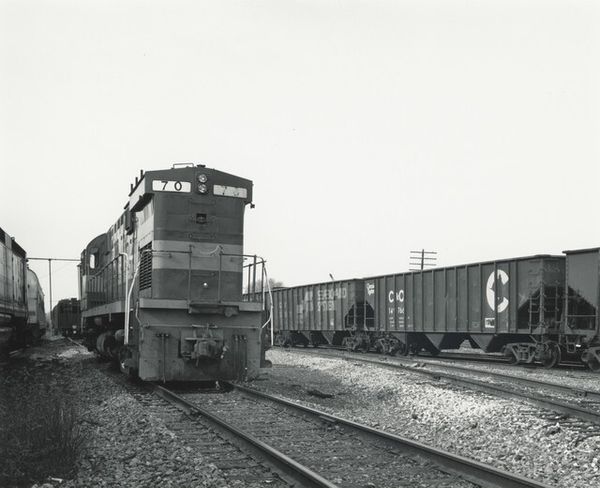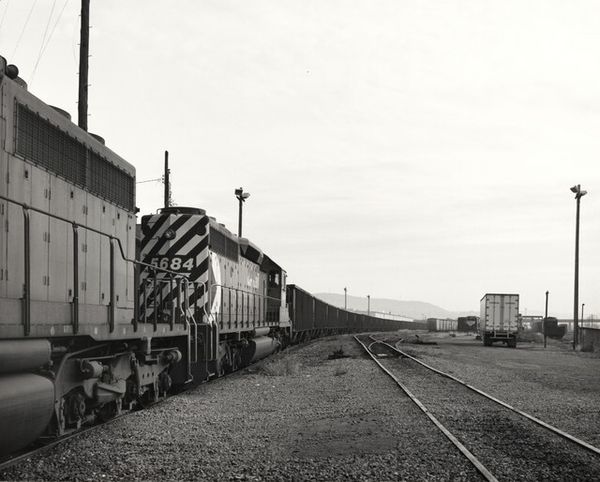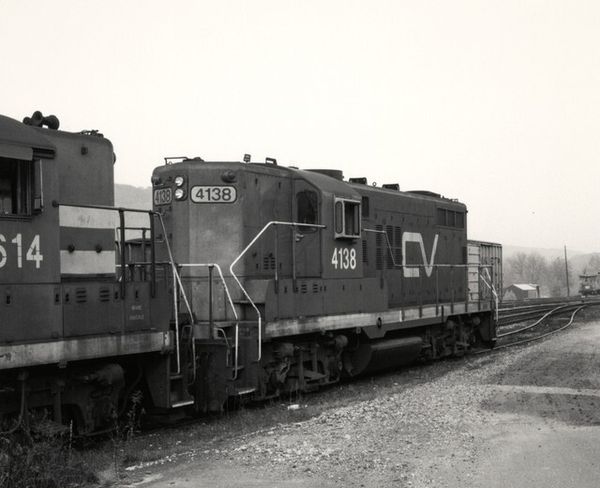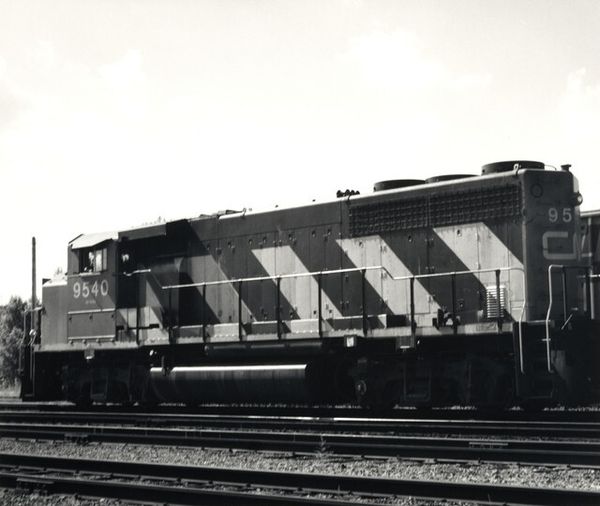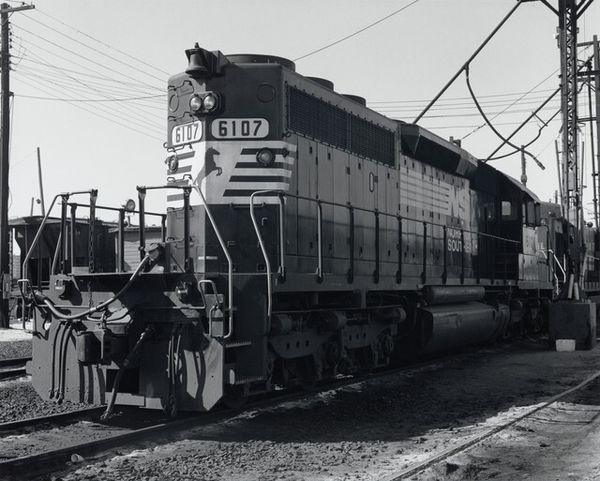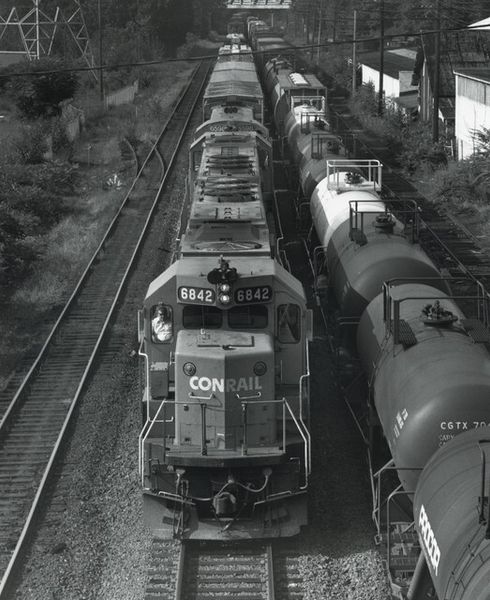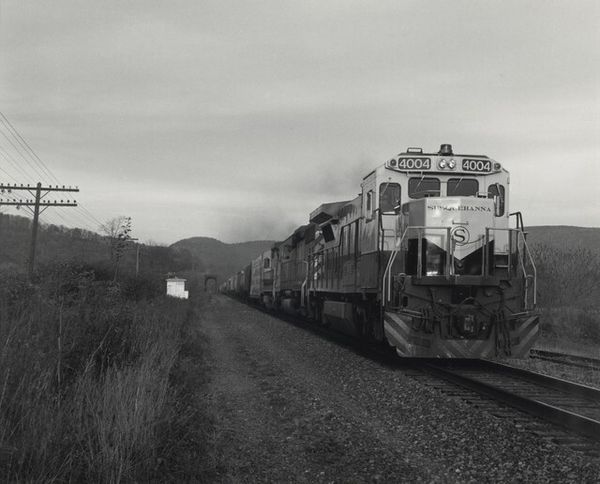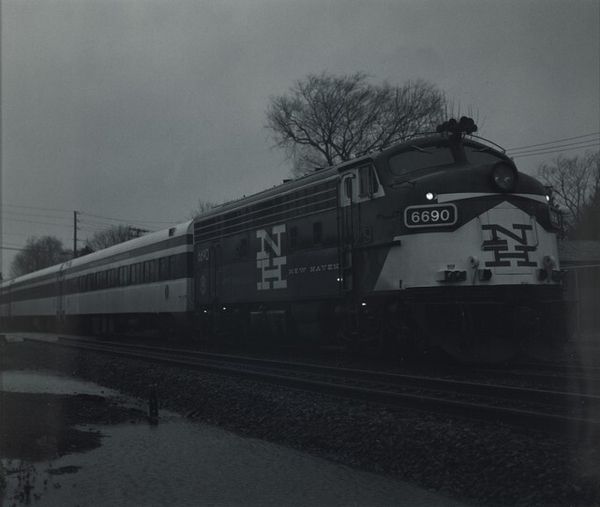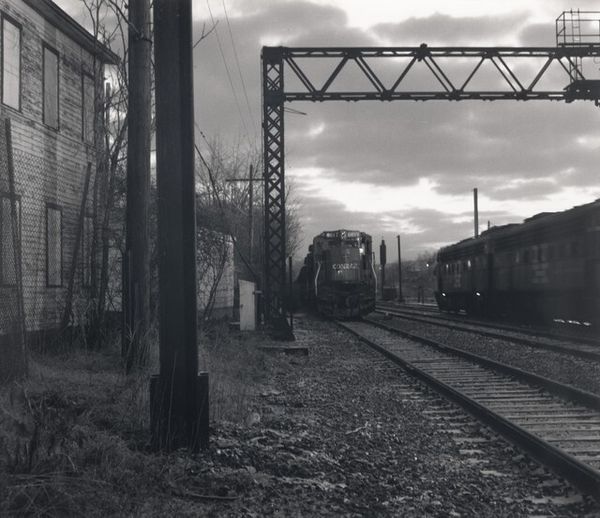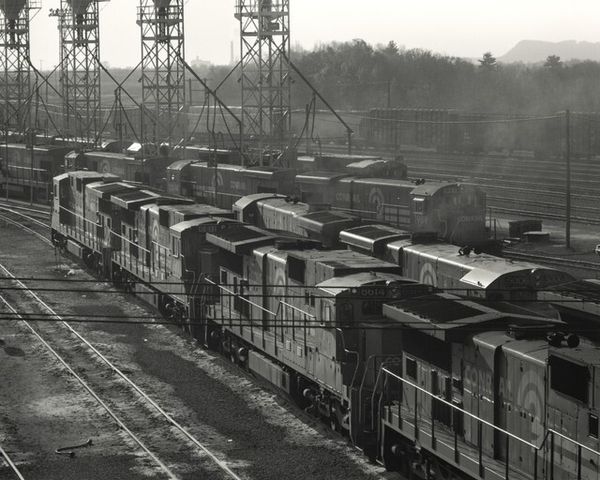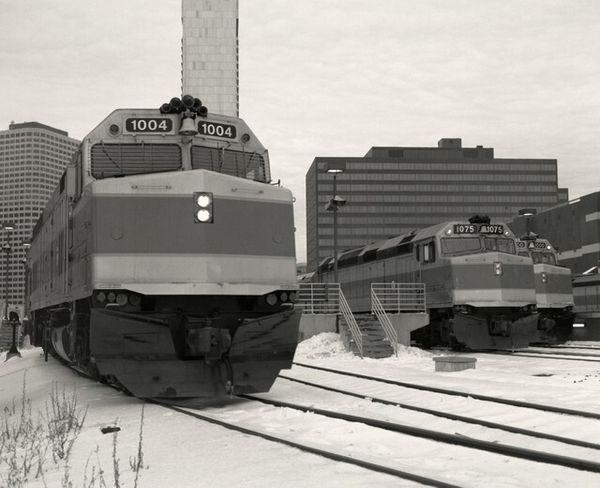
Engine Terminal, Martinsburg, West Virginia Possibly 1991 - 2020
0:00
0:00
photography
#
black and white photography
#
landscape
#
outdoor photograph
#
photography
#
monochrome photography
#
cityscape
Dimensions: image: 23.3 × 28.8 cm (9 3/16 × 11 5/16 in.) sheet: 27.7 × 35.5 cm (10 7/8 × 14 in.)
Copyright: National Gallery of Art: CC0 1.0
Curator: This is a photograph by James Welling, tentatively titled "Engine Terminal, Martinsburg, West Virginia," believed to have been taken sometime between 1991 and 2020. Editor: It’s bleak, yet…powerful. The tonal range in this monochrome image guides my eye carefully through a scene of impressive, aged industrial infrastructure. The juxtaposition of geometric shapes in the locomotives against the organic elements of the tracks, with an interesting contrast of crisp foreground details softening in the distance. Curator: Agreed. Welling's eye leads us through what was likely once a thriving industrial hub. He employs the tools of photography—texture, light, composition—to present the subject neutrally. He avoids overtly sentimental interpretations, focusing on the visual qualities and formal elements, drawing your attention back to surface and shape. Editor: The high contrast underscores this atmosphere of decay but also highlights the historical role of such terminals within communities, especially concerning labour practices. Look at those buildings receding into the distance—remnants of a bygone era when such infrastructure shaped lives and livelihoods. How might those local stories intersect? Curator: Precisely, while the social aspect looms quietly in the background, formally, I’m drawn to how the tracks and utility poles create converging lines. It subtly directs our perception within the flattened picture plane, engaging with principles of spatial recession. Notice how that dark building bookends and almost mimics the train’s colour and composition? Editor: I am more invested in those poles; symbols, and I mean that almost literally, of technological progress during that early industrial period. It raises critical questions about community changes that resulted from progress, and asks what has been retained and what lost. The way we preserve such remnants speaks volumes about us. Curator: Absolutely. The photograph operates on several levels, engaging in purely aesthetic observations and wider commentary regarding modernity. Ultimately, Welling encourages viewers to actively participate in interpreting visuality. Editor: Right, whether by observing shape relationships or asking more involved political and social questions surrounding its historical weight.
Comments
No comments
Be the first to comment and join the conversation on the ultimate creative platform.

